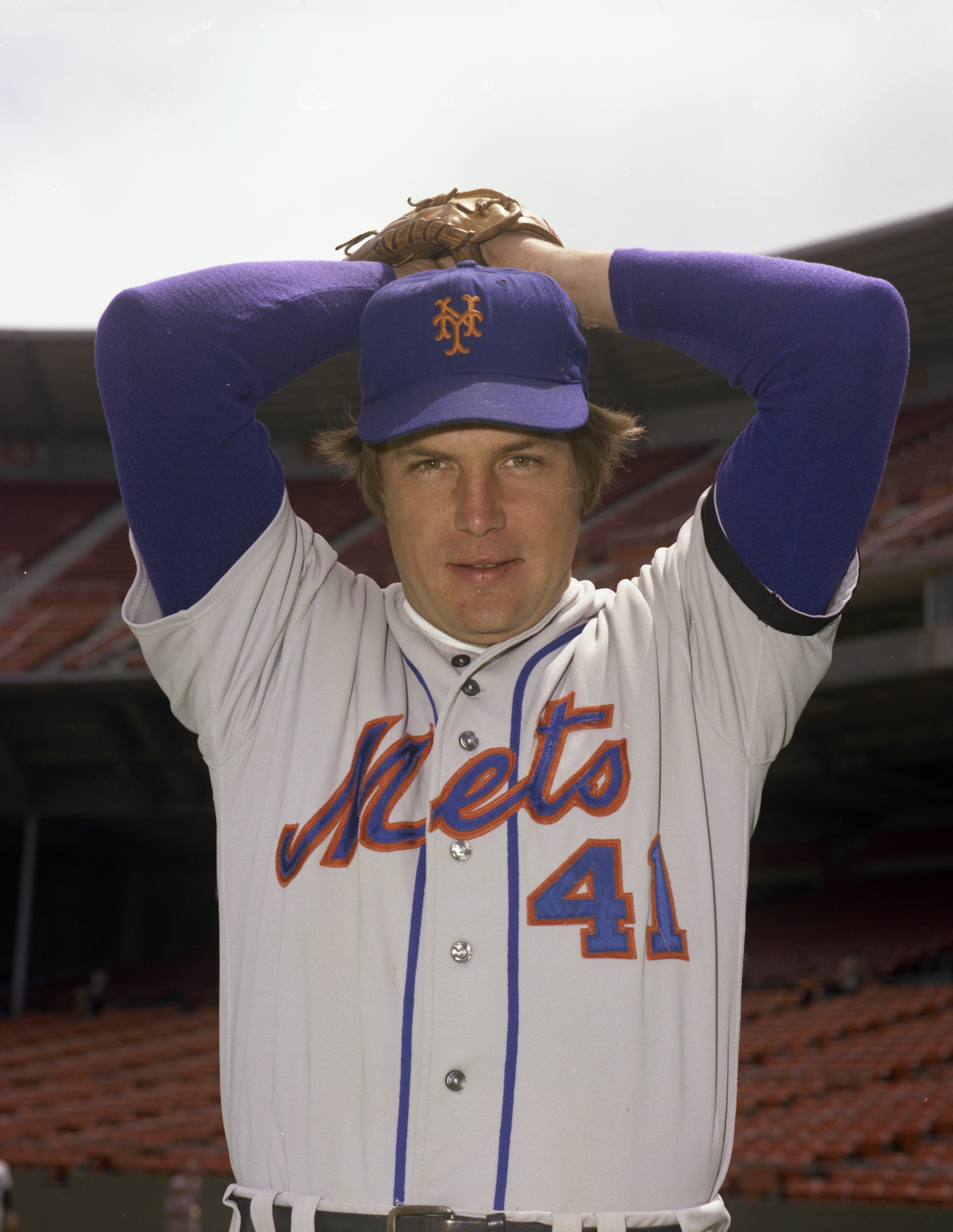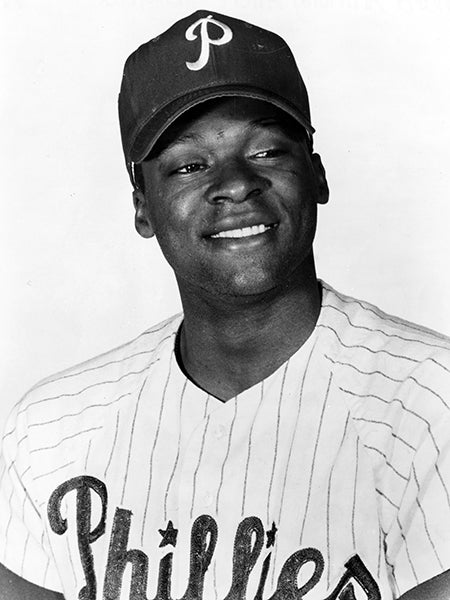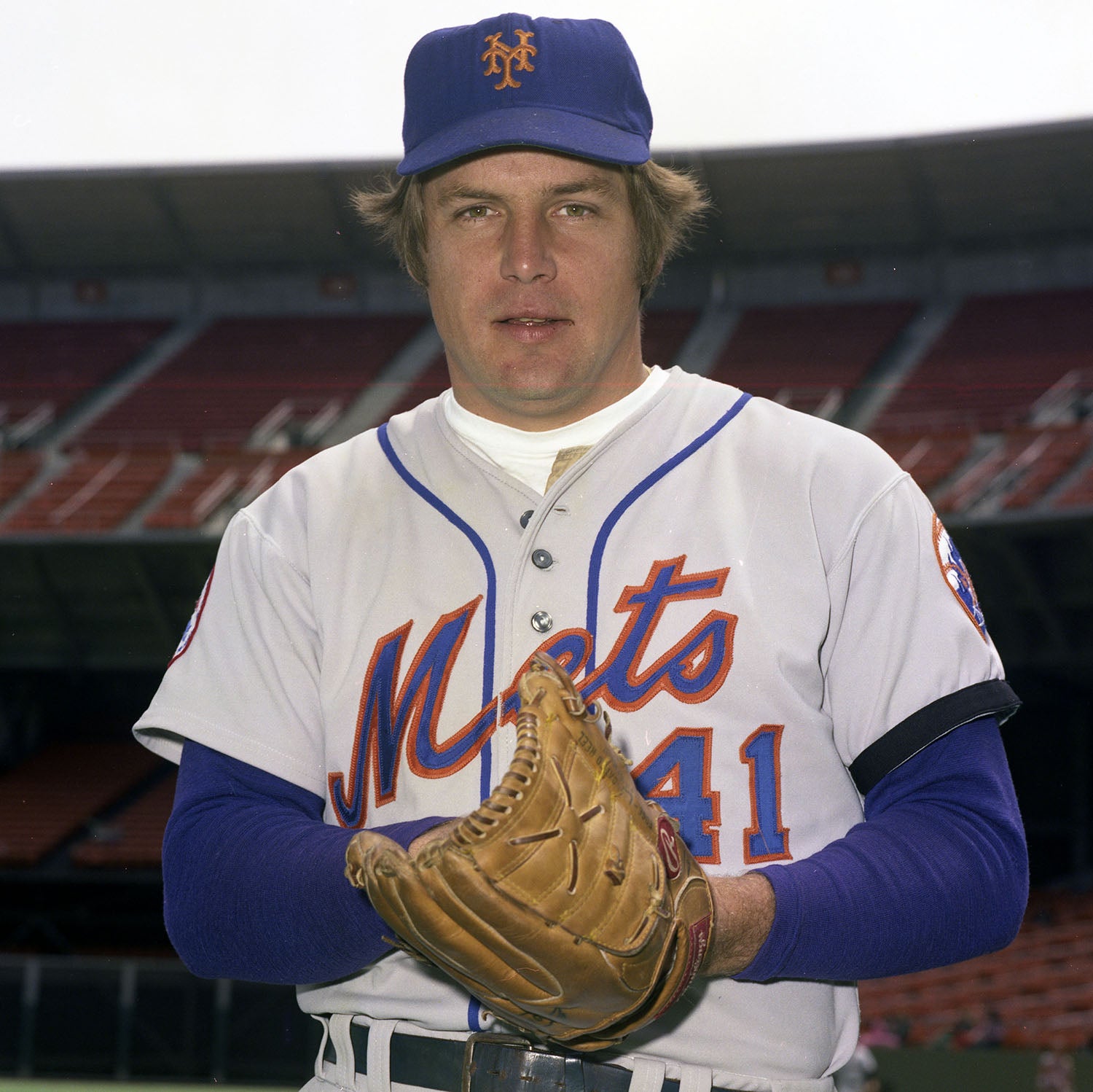- Home
- Our Stories
- Seaver signs richest one-year deal for pitchers in MLB history
Seaver signs richest one-year deal for pitchers in MLB history
With two National League Cy Young Awards, three NL earned-run average titles and seven All-Star Game selections to his credit through the 1973 season, Tom Seaver was undoubtedly one of the best pitchers in baseball.
On Feb. 21, 1974, the New York Mets paid Seaver as such – signing him to a one-year deal worth $172,500, a record for a pitcher.
“He’s the best pitcher in baseball,” Mets general manager Bob Scheffing told the Sporting News, “and we’re paying him for what he is.”
Seaver became one of about 40 players making more than $100,000 that season, topped by the White Sox’s Dick Allen at $250,000. By the end of the decade, baseball salaries would explode – with Nolan Ryan becoming the first $1 million per year player in 1980.
But in 1974, MLB players were not the highest paid among the four major team sports. NBA stars like Kareem Abdul-Jabbar and Wilt Chamberlain, for example, were already earning more than $300,000 per season.
“Salaries in other sports have skyrocketed, mostly as a result of bidding wars between rival leagues,” Seaver told the Sporting News. “They have made the baseball owners aware of the kind of money being paid in other sports. It has helped bring the baseball salaries up to a more realistic level.”
By the time Seaver retired following the 1986 season, Mike Schmidt held the MLB salary record with a deal that paid him more than $2 million annually.
More importantly, Schmidt and Seaver were well on their way to Cooperstown.
“I wasn’t angling to be the highest-paid pitcher when I began my salary negotiations,” said Seaver after signing his 1974 contract. “I did my own negotiating.
“I feel that I have given (the Mets) not only game after game but year after year as well. I have given them seven good years, and hopefully, I will give them seven more.”
It was not meant to be for the Mets and Seaver, though he did win his third Cy Young Award in 1975 and led the NL in strikeouts in both 1975 and 1976. But by the middle of the 1977 season, the Mets launched a rebuild that resulted in Seaver being dealt to the Reds for four prospects.
Seaver went on to win 108 games in his final nine big league seasons, one of which featured a return to the Mets. Upon his retirement, Seaver owned a record of 311-205 with a 2.86 ERA and 3,640 strikeouts.
In 1992, he was named on 98.84 percent of Hall of Fame ballots by the Baseball Writers’ Association of America – the highest percentage ever to that point.
Craig Muder is the director of communications for the National Baseball Hall of Fame and Museum
Tom Seaver recorded a 2.57 ERA over his 12 seasons with the New York Mets. (Rich Pilling/National Baseball Hall of Fame and Museum)
Share this image:
Related Stories

Tom Seaver strikes out 10 straight Padres

Tom Seaver Announces His Retirement
Related Stories

Tom Seaver strikes out 10 straight Padres









